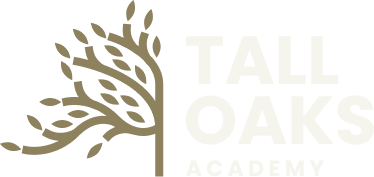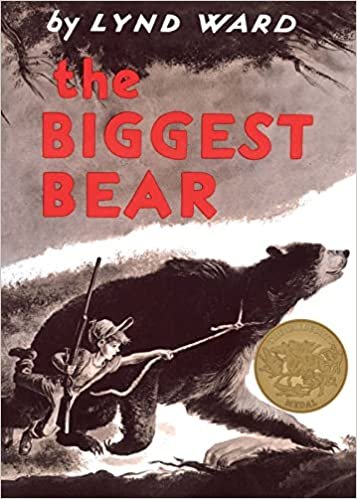Great Books (Foundation Series)
When we define what classical Christian education is, one of the foundational items that always has to be discussed is great books. This item is multifaceted and is pursued in various ways, but the driving factor in all facets is a desire to preserve the greatest books of our past that have stood the tests of time. The reason for a focus on this preservation is because much of this literature is being stripped from modern curriculums. There are various reasons for this, but we believe central to this is the vicious cycle below…
Students are struggling to read proficiently.
Educators become hyper-focused on grade level content.
Curriculum writers mass produce content that is grade-level oriented.
The quality of the grade-level content being produced is extremely low.
Students begin to hate reading, which brings us back to the first step.
This is not to say that focusing on giving students grade level content isn’t important, or that we don’t need to differentiate content based on individual student reading levels. These things are certainly important, but too often we are pursuing this differentiation at the expense of quality content. So, when we talk about preserving great books, we are talking about not compromising on the quality of the content that our students engage with. In the rest of this article I will elaborate on stories and ideology literature.
Stories
The first area of preservation is within the realm of stories. We love to talk about this area because this is where parents can really get involved with their children at a young age. In fact, we view it is absolutely necessary for children to begin learning how to read on the laps of their parents! Great books are not just for older, smarter kids. In fact, my wife and I started weeding out the books that are in our house for our two older kids who are two and four years old, and replaced some of the less than exceptional books with real stories that are worth reading. It ends up becoming a win-win because not only do our kids end up loving the stories, we as adults love the stories too! This is the beginning. This is where children will begin to develop a love for good stories, and a love for reading. Even before they know how to read, we can and should begin developing that love. There is a significant body of research out there on the positive effects that reading to your kids has on their future development as a reader. Learning to read doesn’t start with focusing on their reading level, it starts with an adult faithfully and passionately reading to them. At Tall Oaks, we set aside time every day for children to be read to by their teacher. We also encourage you to do this every night at home with a good book. We promise you, building the habit of reading together as a family will not disappoint!
When weeding through and deciding which books are worth reading, there are a few considerations. The first consideration is whether the book actually tells a story. It’s stunning how many books we find today that aren’t even stories. These books tend to be pictures that just tell you what a character is doing or thinking. There are other books that just focus painstakingly to make the book rhyme, but don’t actually create any sort of meaning. These are the fluffy, cutesy, hollow “happy meal” books I have referred to in other articles. These are the books you are looking to avoid! Now, is it the end of the world if there are some of these books that still linger in your house and you sprinkle some of them in from time to time? No, not at all. The point is that this should not be the main substance your kids are consuming.
Look for books that have three characteristics…
The book tells a story that has a plot structure (Introduction, rising action, climax, falling action, resolution).
The story leaves open ended questions. It should not be too direct and shouldn’t tell the reader exactly what to think.
The book should spark the imagination of the child and hold their interest.
As you begin picking books with these specific qualities, you will start to notice just how much the quality of literature out there varies! Below are three of our family favorites and hopefully gives you a very small snapshot into the kinds of books we’re talking about.
This was a favorite from the moment we started reading it. The illustrations are great, but the story itself really drew the attention of both our four year old and two year old. There are many endless open ended discussion points in this story, even before you open the book! “Why in the world does that boy have a leash on a bear??”
Katy No Pocket is a great story to open imaginations around problem solving. The story starts on page one with a very clear problem, and the rest of the story is a journey to solve that problem. Many connections can be made to this about God’s unique design of each person, and finding purpose and meaning despite challenging situations.
This story really captures our kids attention, and it builds in suspense. This story is filled with competition and time constraints, but also involves problem solving discussions near the end. This can even be used as kids get older to discuss deeper questions regarding technology automation limiting manual labor jobs and problems we may need to solve in relation to that. That’s further down the road, though!
The Great Conversation
The second item related to the great books is what many have referred to as “The Great Conversation.” What is meant by this is the ongoing process of historical thinkers interacting with each other in their writings, whether intentionally or not, and building upon thoughts of predecessors throughout history. This conversation is a striving towards truth. These conversations are in the form of writing or speech, but regardless of the form, we want to preserve these writings so our students may learn and gain wisdom from them. There are many ideas that have been voiced throughout human history. Some have been good, and some have been blatantly evil. We believe that our children should engage with both. It may seem strange to advocate for this because we are living in a time when it is increasingly popular to advocate for certain books to be banned. The idea of book banning, by its very nature, gets something completely wrong about humanity. That is, that we are fallen, and the ideas in the books you are talking about banning will come up again in future generations whether you like it or not. When those ideas do show their head again, we are going to want to be able to read the warning signs so as to not repeat the worst of history! The only way we will be able to read those warning signs is if we have a generation who has studied these ideas before and will therefore know how to recognize the ugly fruit they produce.
All of this said, as our children get older they will begin to engage in The Great Conversation. Reading giant works of our past, and very likely some of the works that you yourself will want to go back to read with them! This is actually one of our favorite things about this idea of preserving the great books. It truly excites parents and makes them want to get involved in their child’s education!
Below are four of our favorite examples of some works that our older students will engage with in The Great Conversation…
Beyond anything else our kids engage with in The Great Conversation, we want them to read everything through the lens of the Truth of God’s Word. This transcends all other study and actually determines how we weigh the truth of other ideas. The Bible is our authority.
This is a book written during the English Civil War and presents many important ideas regarding government and its role. This is an important work in political philosophy as students begin to learn about the separation of Church and State, as well as the role government has to play in society.
For those that know this work and the author, you know the ideas presented in this book are quite antithetical to the Christian worldview. Nietzsche was an atheist, but at least he was an honest atheist who let his worldview come to its logical conclusions. Many atheists today are influenced by his work, and so it is important for our students to understand what they may interact with.
What a spectacular set of essays to read as our students study American history! This is one example of our students engaging with primary sources instead of just textbooks to learn. There are endless classroom discussions that can come from engaging with these essays.
Confessions is considered one of Augustine’s most important works, and is an autobiography. Many important Christian ideals and biblical truths are found in the pages of this writing. This is one that can present students with a clear pathway to faith, if they have ears to hear.
How could you talk about the classics and the great conversation in more recent history and not mention C.S. Lewis? This is a staple among other works by Lewis our older students will engage with. It is a good pathway into works by G.K. Chesterton as well!
Don’t forget
Within all of this, I have often thought of the illustration of a grandchild sitting at the feet of their grandparent. The grandparent is telling them stories or giving them advice about life. Far too often, though, the advice goes in one ear and out the other, supposing that their grandparent just lived in a different time and their advice is worthless. They arrogantly feel that they must figure out life on their own because it’s simply a different time, yet in so doing they go on and repeat all the same mistakes their grandparent was warning them about!
We must learn from our past, and engage with the most beautiful and important works of history. It is an inheritance. May we not be like the Israelites and give in to the perennial temptation to forget.










